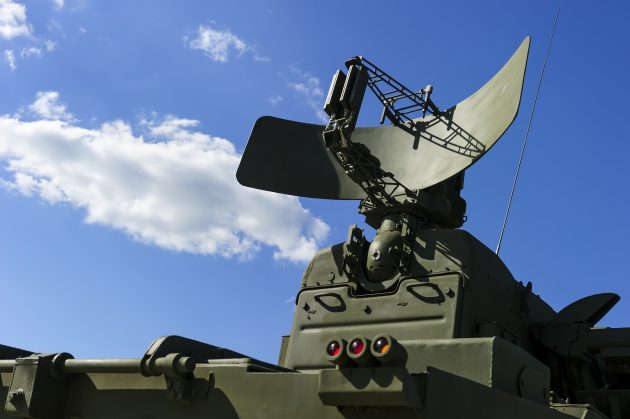
Procurement to overtake RDT&E spending in US DoD’s electronic warfare market by 2025
by CM Staff
There will be continued efforts to detect and counter adversary EW systems and improve aircraft and ship survivability, finds Frost & Sullivan

military radar
SANTA CLARA, Calif. — Frost & Sullivan’s recent analysis, US DoD Electronic Warfare, 2020–2025, finds that in 2021 the integration of commercial information technology (IT) products with legacy electronic warfare (EW) technologies will accelerate. EW spending through 2025 is expected to remain stable, and the US Department of Defense (DoD) electronic warfare market is estimated to reach US$3.6 billion by 2025 from US$3.17 billion in 2021.
The 2021 DoD budget includes US$3.17 billion for 45 EW programs across the military service departments and various platforms. Research, development, test, and evaluation (RDT&E) is the largest spending category requested, with 30 programs totaling US$1.68 billion for 2021. However, procurement is expected to overtake RDT&E by 2025. The research includes market trends and future concepts that shed light on spending and the importance of participating in certain projects and programs.
“As the technical and operational line between legacy radio frequency (RF) jamming and digital offensive information operations is blurring, future EW systems will require a combination of both activities,” said Brad Curran, Aerospace & Defense Research Analyst at Frost & Sullivan, in a prepared statement. “Advanced computing/signal processing, data analytics, and frequency management algorithms are enabling new EW concepts.”
Curran added: “Joint service EW planning is gaining priority as multi-domain concepts of operations, joint battle management, unmanned aerial vehicle (UAV) jamming technology, electromagnetic spectrum deception, and mitigation and anti-jam satellite systems are deployed. Further, EW procurement will focus primarily on shipboard EW systems, common infrared (IR) countermeasures, common missile warnings, torpedo defenses, and EW planning tools. In 2025, advanced EW systems for the F-35 aircraft are expected to be installed.”
As EW capabilities expand beyond traditional dedicated platforms to become an integral part of a variety of platform missions, they present lucrative growth prospects to market participants:
- EW to enable frequency spectrum dominance: EW solution providers must develop ways to defend against adversary attacks while maintaining the electromagnetic spectrum’s friendly use.
- Counter UAV to deny adversary surveillance and reconnaissance: Counter UAV solution providers must integrate a wide variety of sensor, targeting, and defeat technologies.
- IR countermeasures to stop adversary missile guidance systems: IR countermeasure solution vendors must develop common systems and integrate them onto a wide variety of aircraft.
- Multipurpose EW programs to sustain and enhance operations: Multipurpose EW solution market participants must conduct system sustainment and maintenance functions.